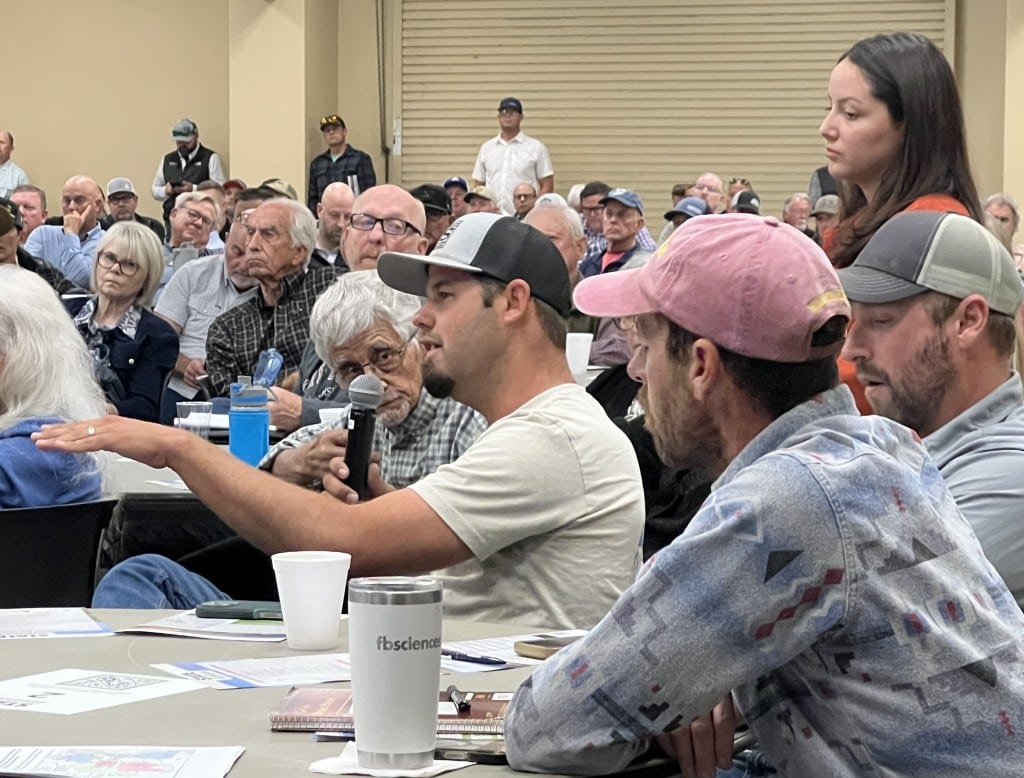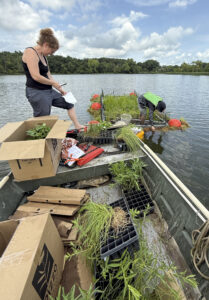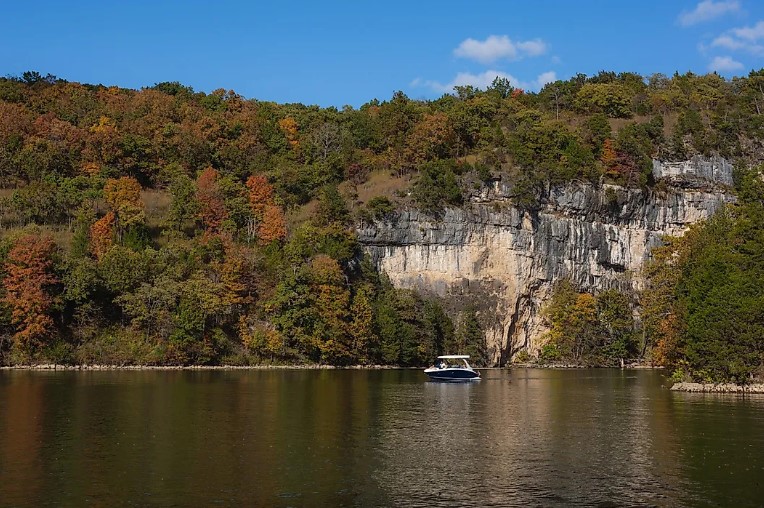Kaweah growers likely to avoid state intervention but still face “mountain of work” – SJV Water

Report on Sustainable Groundwater Management in the Kaweah Subbasin and Alignment with Sustainable Development Goals (SDGs)
1.0 Executive Summary
Water management authorities in the Kaweah subbasin are implementing stringent groundwater management plans in compliance with the Sustainable Groundwater Management Act (SGMA). Despite the removal of immediate state intervention threats, the focus remains on long-term sustainability, directly addressing several United Nations Sustainable Development Goals (SDGs). The plan necessitates significant reductions in groundwater pumping, which will impact agricultural production. This report outlines the primary challenges, strategic actions, and stakeholder responsibilities in achieving sustainable water resource management, with a specific focus on SDG 6 (Clean Water and Sanitation), SDG 2 (Zero Hunger), SDG 11 (Sustainable Cities and Communities), and SDG 17 (Partnerships for the Goals).
2.0 Challenges to Achieving Water Sustainability (SDG 6)
The Kaweah subbasin faces critical environmental and resource challenges that threaten its long-term viability and conflict with the objectives of SDG 6. Key issues identified by management agencies include:
- Chronic Aquifer Overdraft: The region currently experiences an annual overdraft of approximately 180,000 acre-feet, representing an unsustainable rate of water consumption.
- Land Subsidence: Excessive groundwater pumping has led to land sinking, particularly on the subbasin’s western edge. This poses a significant threat to critical infrastructure, directly impacting the resilience goals of SDG 11.
- Water Quality Degradation: Maintaining water quality for agricultural and domestic use is a primary concern.
- Protection of Domestic Wells: Falling groundwater levels threaten the viability of domestic water sources, a core component of ensuring access to clean water under SDG 6.
3.0 Strategic Plan for Sustainable Groundwater Management
To address these challenges, Groundwater Sustainability Agencies (GSAs) have outlined a multi-faceted strategy. The implementation of this plan is crucial for aligning regional practices with global sustainability targets.
- Demand Reduction through Pumping Allocations: The primary strategy involves reducing water demand by an estimated 120,000 acre-feet. This will be achieved through the implementation of limited pumping allocations for users, a necessary measure to balance the water budget.
- Water Recharge and Conservation Projects: Existing and planned projects for water recharge and conservation are projected to mitigate approximately one-third of the annual overdraft.
- Proactive Subsidence Management: In alignment with draft guidance from the Department of Water Resources (DWR), managers will prioritize actions to curb subsidence. This requires a rapid and decisive response to protect infrastructure as outlined in SDG 11.
- Regional Collaboration (SDG 17): A key component of the strategy is enhanced collaboration with adjacent Tule and Tulare Lake subbasins to manage subsidence and water resources on a regional scale, embodying the principles of SDG 17.
4.0 Stakeholder Roles and the Path to Sustainable Agriculture (SDG 2 & SDG 17)
Achieving sustainability is a collective responsibility requiring active participation from all stakeholders. While these measures support long-term water security (SDG 6), they create significant challenges for food production (SDG 2).
4.1 Responsibilities of the Agricultural Community
- Enhanced Water Use Efficiency: Growers are urged to maximize on-farm water efficiency and adopt conservation practices.
- Participation in Recharge Efforts: Farmers are encouraged to explore opportunities for on-site water recharge when excess surface water is available.
- Compliance with Well Registration: Timely registration of wells by mid-2026 is essential for accurate data collection and fair allocation decisions.
4.2 GSA and Governance Outlook
GSA managers are working to provide a degree of stability for agricultural planning, such as exploring five-year allocation frameworks. However, this stability is contingent on variable conditions like drought. The overarching goal remains to preserve as much agricultural activity as possible while transitioning the subbasin to a state of sustainable groundwater use, thereby balancing the objectives of SDG 2 and SDG 6 for future generations.
Analysis of Sustainable Development Goals in the Article
1. Which SDGs are addressed or connected to the issues highlighted in the article?
- SDG 6: Clean Water and Sanitation: This is the most prominent SDG in the article. The entire text revolves around the sustainable management of groundwater resources, including issues of water levels, water quality, overdraft, and efficient use. The implementation of the Sustainable Groundwater Management Act (SGMA) is a direct effort to ensure the availability and sustainable management of water.
- SDG 2: Zero Hunger: The article directly links water management to agriculture. The reduction in groundwater pumping is stated to result in “less farming.” The challenges faced by farmers in maintaining their operations under new water allocations connect to the goal of ensuring sustainable food production systems and supporting agricultural livelihoods.
- SDG 11: Sustainable Cities and Communities: The issue of land subsidence, a direct consequence of groundwater overdraft, is highlighted as a major concern. Subsidence threatens infrastructure, such as the Friant-Kern Canal, which is crucial for communities and the regional economy. This connects to the goal of making human settlements and infrastructure safe, resilient, and sustainable.
- SDG 9: Industry, Innovation and Infrastructure: This goal is relevant due to the focus on protecting critical infrastructure from damage caused by subsidence. The article explicitly mentions that subsidence “causes damage to infrastructure, such as the Friant-Kern Canal,” linking groundwater management directly to the resilience and sustainability of essential infrastructure.
- SDG 8: Decent Work and Economic Growth: The economic viability of farming is a key theme. A grower’s question, “How can you own a business if you don’t have stability?” and the manager’s response about trying to “preserve as much ag as we can” highlight the connection between sustainable resource management and the economic stability of the agricultural sector.
- SDG 17: Partnerships for the Goals: The article demonstrates this goal through the collaborative efforts described. The “State of the Subbasin” event brought together water managers, consultants, and over 350 farmers. Furthermore, the mention of “working regionally with the adjacent Tule and Tulare Lake subbasins” exemplifies the cross-jurisdictional partnerships required to implement integrated water management.
2. What specific targets under those SDGs can be identified based on the article’s content?
-
Target 6.4: By 2030, substantially increase water-use efficiency across all sectors and ensure sustainable withdrawals and supply of freshwater to address water scarcity.
- The article directly addresses this by discussing the need to reduce groundwater overdraft of “180,000 acre feet per year” and cut demand by “about 120,000 acre-feet.” The call for growers to be “vigilant on their water use, doing what they can do to maximize efficiency” also aligns with this target.
-
Target 6.5: By 2030, implement integrated water resources management at all levels, including through transboundary cooperation as appropriate.
- The article is centered on the implementation of groundwater plans under California’s Sustainable Groundwater Management Act (SGMA). The mention of “working regionally with the adjacent Tule and Tulare Lake subbasins” is a clear example of implementing integrated and cooperative water management.
-
Target 2.4: By 2030, ensure sustainable food production systems and implement resilient agricultural practices that increase productivity and production, that help maintain ecosystems… and that progressively improve land and soil quality.
- The discussion about reducing groundwater pumping to sustainable levels forces a shift towards more resilient agricultural practices. The effort to provide “five-year allocation chunks for planning” despite challenges like drought years is an attempt to create a framework for sustainable agriculture in a water-scarce environment.
-
Target 11.5: By 2030, significantly reduce… direct economic losses relative to global gross domestic product caused by disasters, including water-related disasters…
- Land subsidence is a slow-moving, water-related disaster. The article’s focus on the need to “curb subsidence” because of the “damage it causes to infrastructure” directly relates to mitigating the economic losses from this phenomenon.
-
Target 9.1: Develop quality, reliable, sustainable and resilient infrastructure… to support economic development and human well-being.
- The article highlights the threat that excessive groundwater pumping poses to the Friant-Kern Canal, a critical piece of water infrastructure. Managing subsidence is presented as essential to protecting and ensuring the resilience of this infrastructure.
3. Are there any indicators mentioned or implied in the article that can be used to measure progress towards the identified targets?
- Level of Water Stress: The article provides specific quantitative data for this indicator. It states that the aquifer is overdrafted by “about 180,000 acre feet per year” and that plans are in place to cut demand by “120,000 acre-feet.” Progress can be measured by tracking the reduction in this annual overdraft.
- Groundwater Levels: The article explicitly mentions that a key goal is to maintain “groundwater levels.” Monitoring these levels over time is a direct indicator of the success of the groundwater management plan.
- Water Quality: The goal to “maintain water quality” implies that specific quality parameters (e.g., salinity, nitrates) are being monitored as indicators of the health of the aquifer.
- Rate of Land Subsidence: The focus on managing and curbing subsidence implies that the rate of land sinking is a critical indicator. The article notes that “managing subsidence is going to require a lot of action, and fairly quickly,” suggesting this is being actively measured.
- Degree of Integrated Water Resources Management (IWRM) Implementation: The article describes the implementation of groundwater sustainability plans under SGMA and regional cooperation with adjacent subbasins. The progress and effectiveness of these plans serve as an indicator for Target 6.5.
- Number of Registered Wells: The call for growers to comply with “well registration requests” so managers can make accurate allocation decisions is a process indicator. The goal to “complete registration by mid-2026” provides a measurable milestone.
SDGs, Targets, and Indicators Table
| SDGs | Targets | Indicators |
|---|---|---|
| SDG 6: Clean Water and Sanitation |
6.4: Increase water-use efficiency and ensure sustainable withdrawals.
6.5: Implement integrated water resources management. |
– Annual groundwater overdraft volume (currently 180,000 acre-feet per year). – Reduction in water demand (target of 120,000 acre-feet). – Groundwater levels. – Water quality measurements. – Progress on implementation of SGMA plans. – Number of registered wells. |
| SDG 2: Zero Hunger | 2.4: Ensure sustainable food production systems and implement resilient agricultural practices. | – Stability of agricultural operations under water allocations (e.g., providing “five-year allocation chunks”). – Adoption of water-efficient farming practices. |
| SDG 11: Sustainable Cities and Communities | 11.5: Reduce economic losses from water-related disasters. | – Rate of land subsidence. – Economic cost of damage to infrastructure. |
| SDG 9: Industry, Innovation and Infrastructure | 9.1: Develop quality, reliable, sustainable and resilient infrastructure. | – Integrity and operational capacity of infrastructure like the Friant-Kern Canal. |
| SDG 8: Decent Work and Economic Growth | (Implied) Sustain economic productivity in the agricultural sector. | – Economic stability of farms (“How can you own a business if you don’t have stability?”). – Amount of agricultural land preserved (“preserve as much ag as we can”). |
| SDG 17: Partnerships for the Goals | (Implied) Enhance multi-stakeholder and regional partnerships. | – Level of farmer engagement (350+ attendees at event). – Establishment of regional cooperation with adjacent subbasins. |
Source: sjvwater.org
What is Your Reaction?
 Like
0
Like
0
 Dislike
0
Dislike
0
 Love
0
Love
0
 Funny
0
Funny
0
 Angry
0
Angry
0
 Sad
0
Sad
0
 Wow
0
Wow
0
















































:focal(1500,1000)/https://media.globalcitizen.org/a6/9a/a69a4720-d8a1-4715-b596-18738d03c05c/rotary_polio_hero_image.jpg?#)







/countries/sri-lanka/photo-credit---dmc-sri-lanka.tmb-1200v.jpg?sfvrsn=dc298bcc_1#)

















